Search the Special Collections and Archives Portal
Search Results
Nan Doughty Family Collection
Identifier
Abstract
The Nan Doughty Family Collection dates from 1845 to 1993 and documents Doughty's personal and professional life. She collected correspondence and papers related to her extended family members including Sallie Bradford, Seymour Kimball Bradford, William Hillman Shockley, and May Bradford Shockley. The collection also includes papers from her father, Thorwald A. Siegfriedt, and her mother, Lou-vee Bradford Siegfried. Doughty used her family histories to write historical essays about early Nevada. The collection includes her professional papers as well as drafts and correspondence related to her writings.
Archival Collection
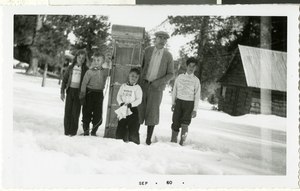
Photograph of Wengert Family with sled, Mount Charleston, (Nev.), 1930-1937
Date
Archival Collection
Description
Image
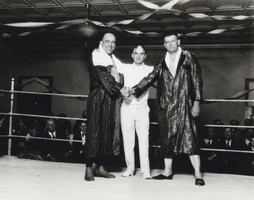
Film transparency of wrestler Lewis Montagna (left), S.F. Vaneman (right), and referee Sam Herman (center) in Las Vegas, Nevada, circa 1920s-1950s
Date
Archival Collection
Description
Image
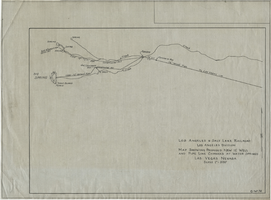
Map showing proposed new 12" well and pipe line changes at Water Springs, Las Vegas, Nevada, circa 1920
Date
Archival Collection
Description
Image
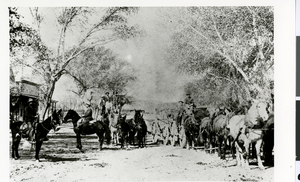
Photograph of men on horses and wagons, St. Thomas, Nevada, circa late 1920s to early 1930s
Date
Archival Collection
Description
Image
Steve Lawrence and Eydie Gormé Papers [UNPROCESSED]
Identifier
Abstract
This collection is unprocessed. See Access Note for additional information. The Steve Lawrence and Edyie Gormé Papers (approximately 1946-2014) are comprised of photographs, promotional material, certificates, musical arrangements, song catalogs, documentation for their "One More for the Road Tour" (2004-2006), correspondence with celebrities and family members, and some personal papers from their childhood.
Archival Collection
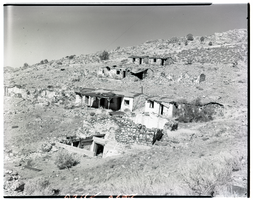
Film transparency of a ghost town, Delamar, Nevada, 1956
Date
Archival Collection
Description
Image
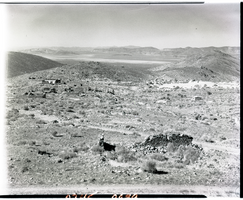
Film transparency of a ghost town, Delamar, Nevada, 1956
Date
Archival Collection
Description
Image

Film transparency of a ghost town, Delamar, Nevada, 1956
Date
Archival Collection
Description
Image
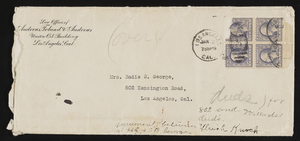
Land contract
Date
Archival Collection
Description
Text
